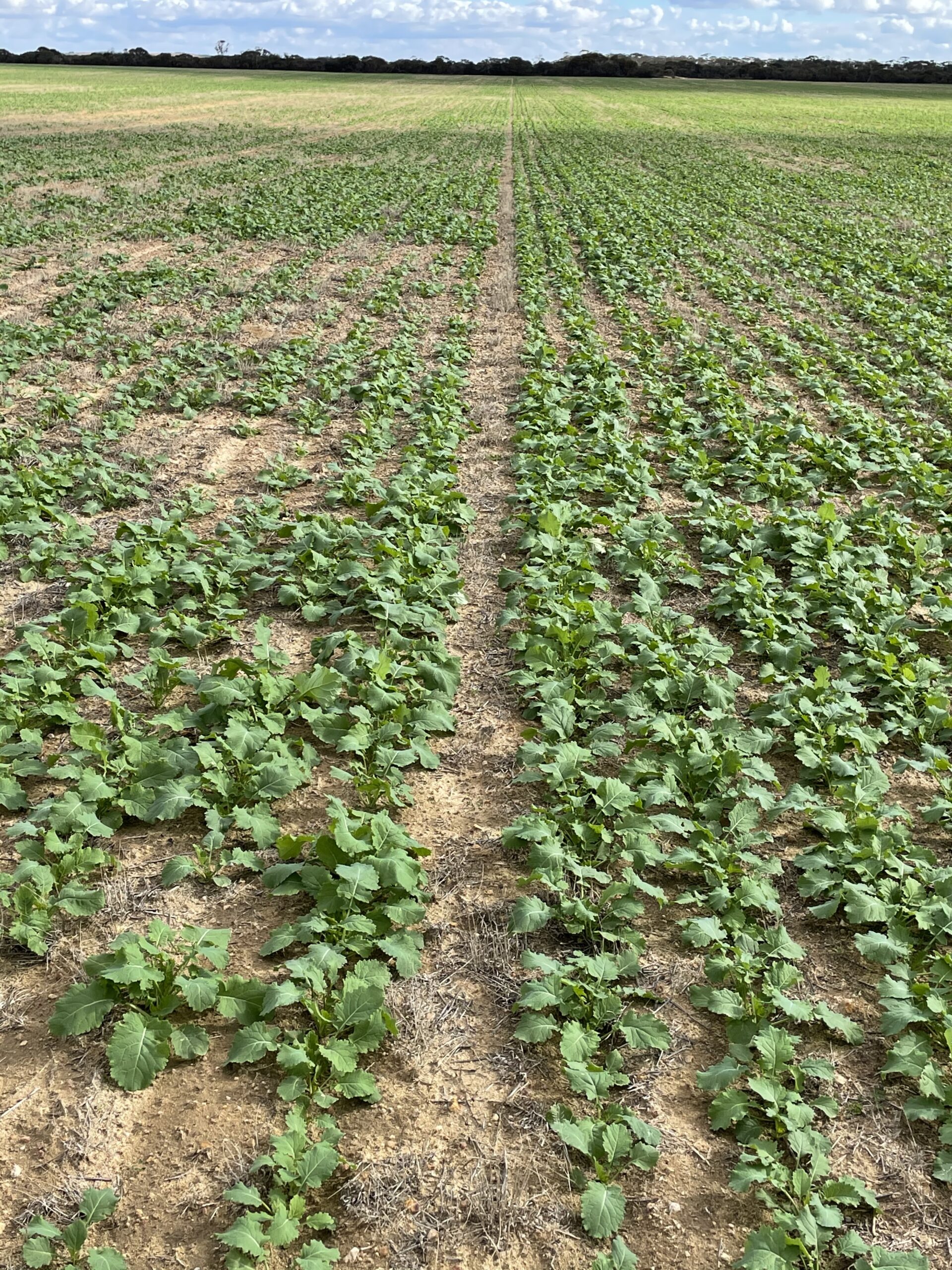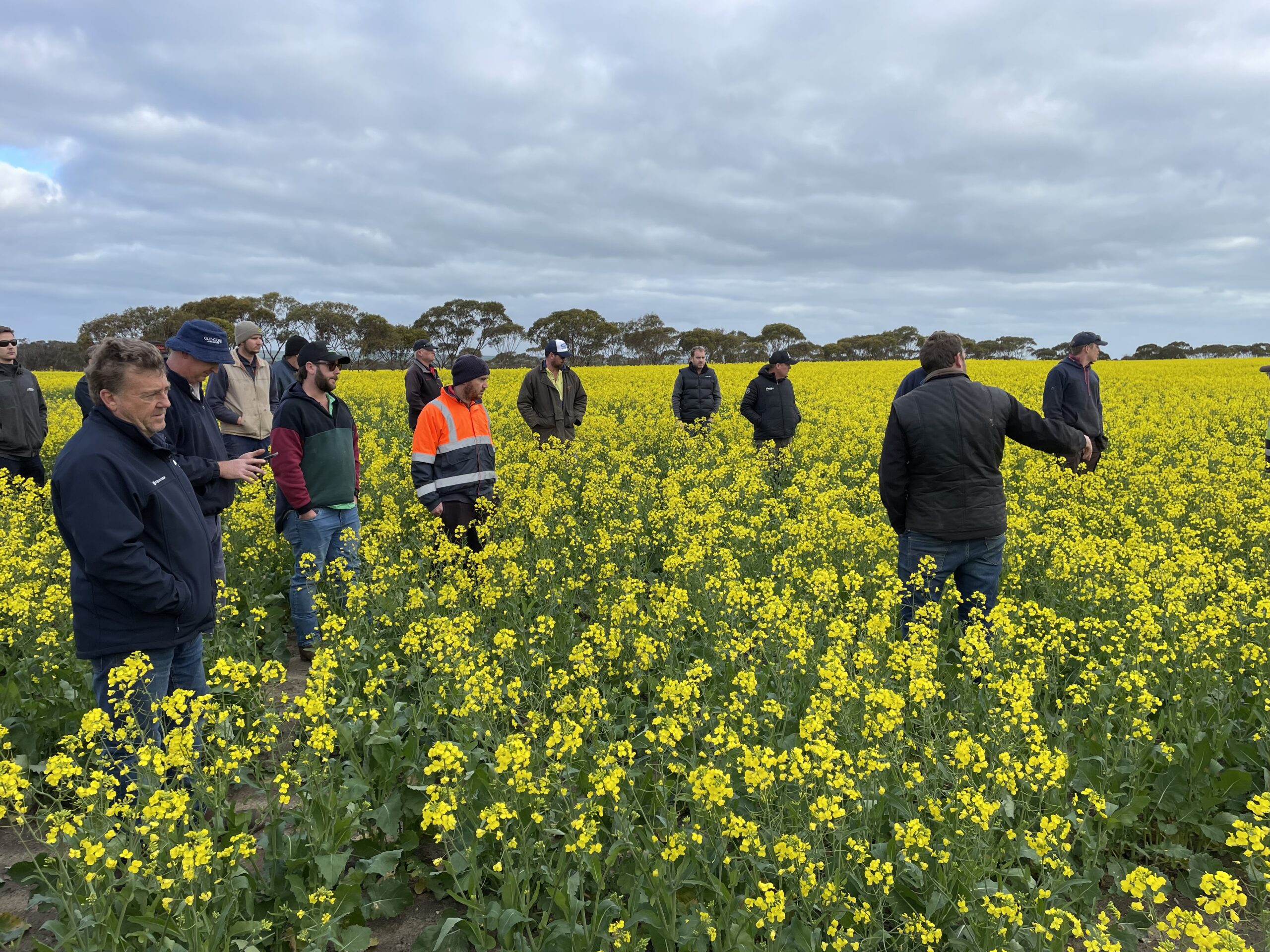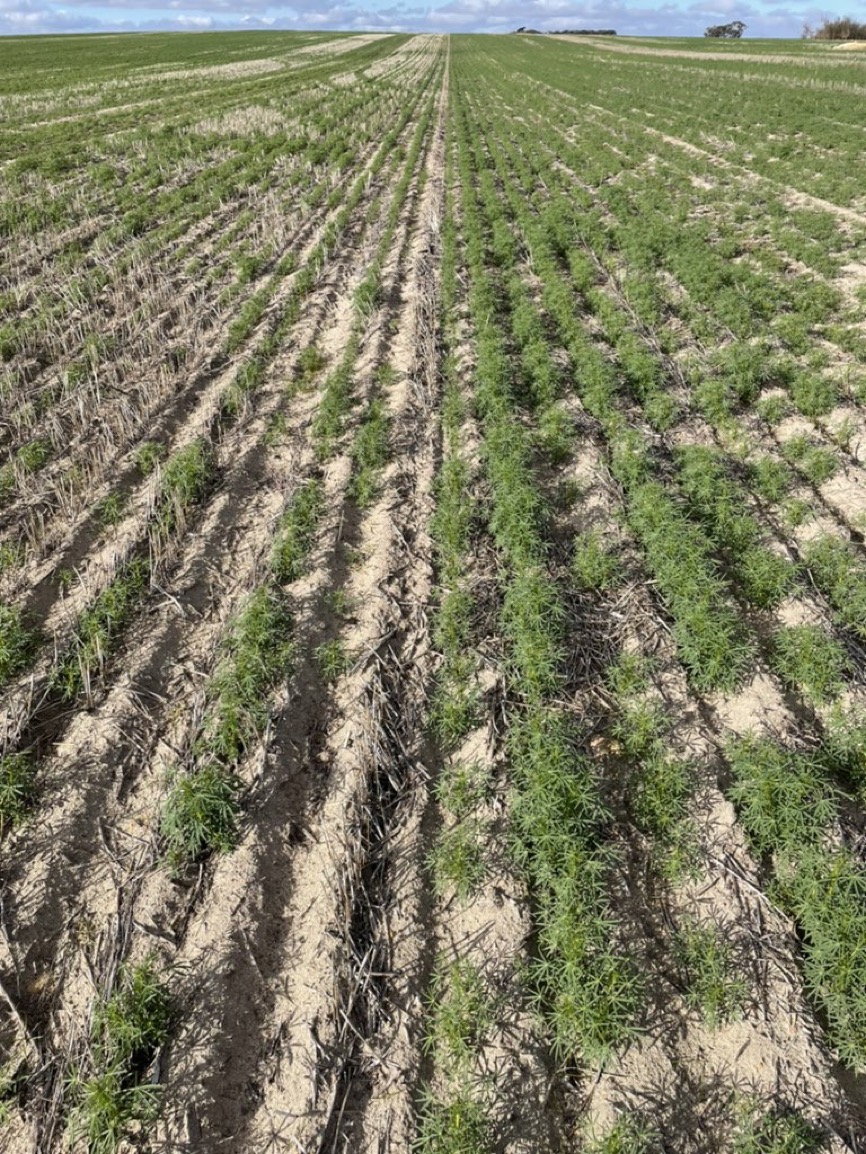
Soil Moisture Agent Suprises in Trials
Publish Date: 30 September 2021
||||IN a higher rainfall season, some may consider use of a soil moisture agent at seeding to be less effective, however trials are continuing to show crop establishment and, in turn, weed control benefits, both of which are key early cropping goals for growers.
||||Fully replicated trials of the SE14™ soil moisture attraction and retention agent, from SACOA, are also investigating recent research into the use of UAN as the carrier of SE14™.
||||Unlike previous years, some fertiliser toxicity has been observed in these cases this sea- son (with compound fertiliser banded below the seed), however it has not occurred in barey.
||||The trials are being conducted at Esperance, Shackleton, Coorow, Badgingarra and Nyabing, the latter which was affected by wet conditions.
||||South East Agronomy Research director Luke Marquis, who is overlooking SE14™ trials in lupins, canola and barley near Munglinup and west of Gibson, said better and more even germinations and crop establishment were the key results of using the moisture agent.
||||Near Munglinup, the lupins were on a non- wetting, deeper sand over gravel soil type and the SE14™ was applied at 2 litres, 3L and 4L per hectare with water rates of 30L, 60L and 90L/ha.
||||“Basically, you would be mad to plant lupins without SE14™” Mr Marquis said.
||||“It got them out of the ground really evenly and they competed with the weeds a lot better than where we didn’t have SE14™.
||||“Plant counts were better and it was very even, with no gaps in the rows, so it competed well with the weeds.
||||“By banding the liquid SE14™ right where the seed goes, it just helps that germination and even establishment, so using it with lupins is a no-brainer.’’
||||Mr Marquis said the canola was on a non- wetting, duplex gravel over clay site and, again, canopy photos had shown gaps in the rows where SE14™ was not applied.
||||The moisture agent was applied at 3L/ha in all canola and barley treatments with differing UAN and water rates, particularly to assess seedling safety when applied with the seed.
||||Mr Marquis said at the non-wetting, sandy gravel soil site west of Gibson, which also had problems with brome grass, SE14™ and up to 75L/ha of UAN was sown with barley seed using a split seeding system.
||||He said the applications appeared to be safe and there were now subtle differences in the trial plots, with the SE14™ treatments showing more even crop canopies.

The Mount Walker canola crop earlier this season, applied with (left) and without (right) SE14™.
||||Byron Milne, of independent research business SLR, which is managing the central and northern agricultural region trial sites, said nitrogen toxicity of canola seedlings was more enhanced this year due to dry earlier sowings followed by rainfall and warm soil conditions, however SE14™ improved crop safety in all cases.

Growers listen during a field walk assessing application of the SE14™ moisture attraction and retention agent with canola at Mount Walker, east of Narembeen.
||||He said it also contributed to improved canola establishment and while lupin establishment was not as strong due to excellent early rains, it still showed more biomass and faster canopy closure.
||||SACOA WA regional manager Damon Fleay said the strong lupin establishment from SE14™ applications was well highlighted near Munglinup, with similar plant numbers in all of the SE14™ and water rate treatments in the trial.
||||Mr Fleay said the good weed control also could be attributed to improved efficacy of pre-emergent herbicides as well as the added crop competition.
||||“SE14™ results in more moisture to activate pre-emergent herbicides and can draw some pre-emergent and/or moisture from the inter- row to help control the in-furrow weeds,” Mr Fleay said.
||||A SE14™ pre-emergent herbicide interaction trial in canola near Kojonup in 2017 showed the SE14™ treated plots had significantly less weeds, even in the plots with no herbicide largely due to crop competition from the canola and a reduction of soil moisture in the inter-row.”
||||Mr Fleay said the trial assessing SE14™ and UAN applied with barley seed near Gibson once again demonstrated that UAN was a safe carrier for SE14™ in cereal crops.
||||“This followed similar trials in previous years, showing that when compound fertiliser is applied away from seed, it is safe to apply SE14™ and UAN at up to 50L/ha with the seed,” he said.
||||“There have been no adverse effects on establishment.’’
||||Mr Fleay said for canola, while applications of SE14™ and UAN with seed illustrated it was safer for UAN to be applied with SE14, grower applications should be carefully considered based on their specific seeding systems and placement of fertilisers.
||||Meanwhile, he said growers using SE14™ in different parts of the agricultural region, incorporating various soil types and environments, also had reported strong establishment of lupin and canola crops this season.

Lupins sown with (right) and without (left) SE14™ at the Purser family’s property near Piawaning.

Canola sown with (right) and without (left) SE14™ at the Johnston family’s property near Nyabing.
||||“Basically, you would be mad to plant lupins without SE14,” Mr Marquis said.
||||“It got them out of the ground really evenly and they competed with the weeds a lot better than where we didn’t have SE14.
||||“Plant counts were better and it was very even, with no gaps in the rows, so it competed well with the weeds.
||||“By banding the liquid SE14 right where the seed goes, it just helps that germination and even establishment, so using it with lupins is a no-brainer.’’
||||Mr Marquis said the canola was on a non- wetting, duplex gravel over clay site and, again, canopy photos had shown gaps in the rows where SE14 was not applied.
||||The moisture agent was applied at 3L/ha in all canola and barley treatments with differing UAN and water rates, particularly to assess seedling safety when applied with the seed.
||||Mr Marquis said at the non-wetting, sandy gravel soil site west of Gibson, which also had problems with brome grass, SE14 and up to 75L/ha of UAN was sown with barley seed using a split seeding system.
||||He said the applications appeared to be safe and there were now subtle differences in the trial plots, with the SE14 treatments showing more even crop canopies.

The Mount Walker canola crop earlier this season, applied with (left) and without (right) SE14.
||||Byron Milne, of independent research business SLR, which is managing the central and northern agricultural region trial sites, said nitrogen toxicity of canola seedlings was more enhanced this year due to dry earlier sowings followed by rainfall and warm soil conditions, however SE14 improved crop safety in all cases.

Growers listen during a field walk assessing application of the SE14 moisture attraction and retention agent with canola at Mount Walker, east of Narembeen.
||||He said it also contributed to improved canola establishment and while lupin estab- lishment was not as strong due to excellent early rains, it still showed more biomass and faster canopy closure.
||||SACOA WA regional manager Damon Fleay said the strong lupin establishment from SE14 applications was well highlighted near Munglinup, with similar plant numbers in all of the SE14 and water rate treatments in the trial.
||||Mr Fleay said the good weed control also could be attributed to improved efficacy of pre-emergent herbicides as well as the added crop competition.
||||“SE14 results in more moisture to activate pre-emergent herbicides and can draw some pre-emergent and/or moisture from the inter- row to help control the in-furrow weeds,” Mr Fleay said.
||||A SE14 pre-emergent herbicide interaction trial in canola near Kojonup in 2017 showed the SE14 treated plots had significantly less weeds, even in the plots with no herbicide largely due to crop competition from the canola and a reduction of soil moisture in the inter-row.”
||||Mr Fleay said the trial assessing SE14 and UAN applied with barley seed near Gibson once again demonstrated that UAN was a safe carrier for SE14 in cereal crops.
||||“This followed similar trials in previous years, showing that when compound fertiliser is applied away from seed, it is safe to apply SE14 and UAN at up to 50L/ha with the seed,” he said.
||||“There have been no adverse effects on establishment.’’
||||Mr Fleay said for canola, while applications of SE14 and UAN with seed illustrated it was safer for UAN to be applied with SE14, grower applications should be carefully considered based on their specific seeding systems and placement of fertilisers.
||||Meanwhile, he said growers using SE14 in different parts of the agricultural region, incorporating various soil types and environments, also had reported strong establishment of lupin and canola crops this season.

Lupins sown with (right) and without (left) SE14 at the Purser family’s property near Piawaning.

Canola sown with (right) and without (left) SE14 at the Johnston family’s property near Nyabing.



